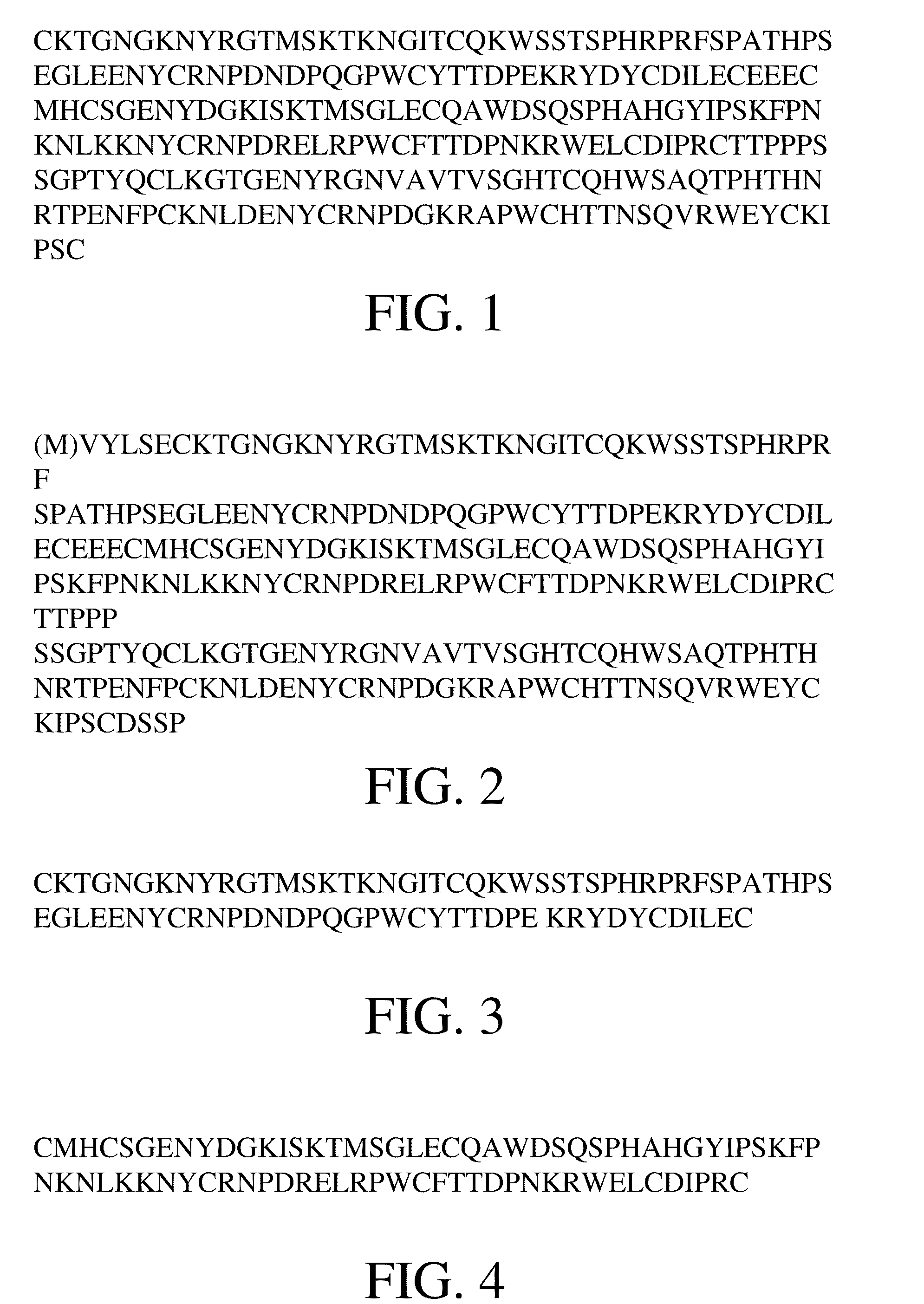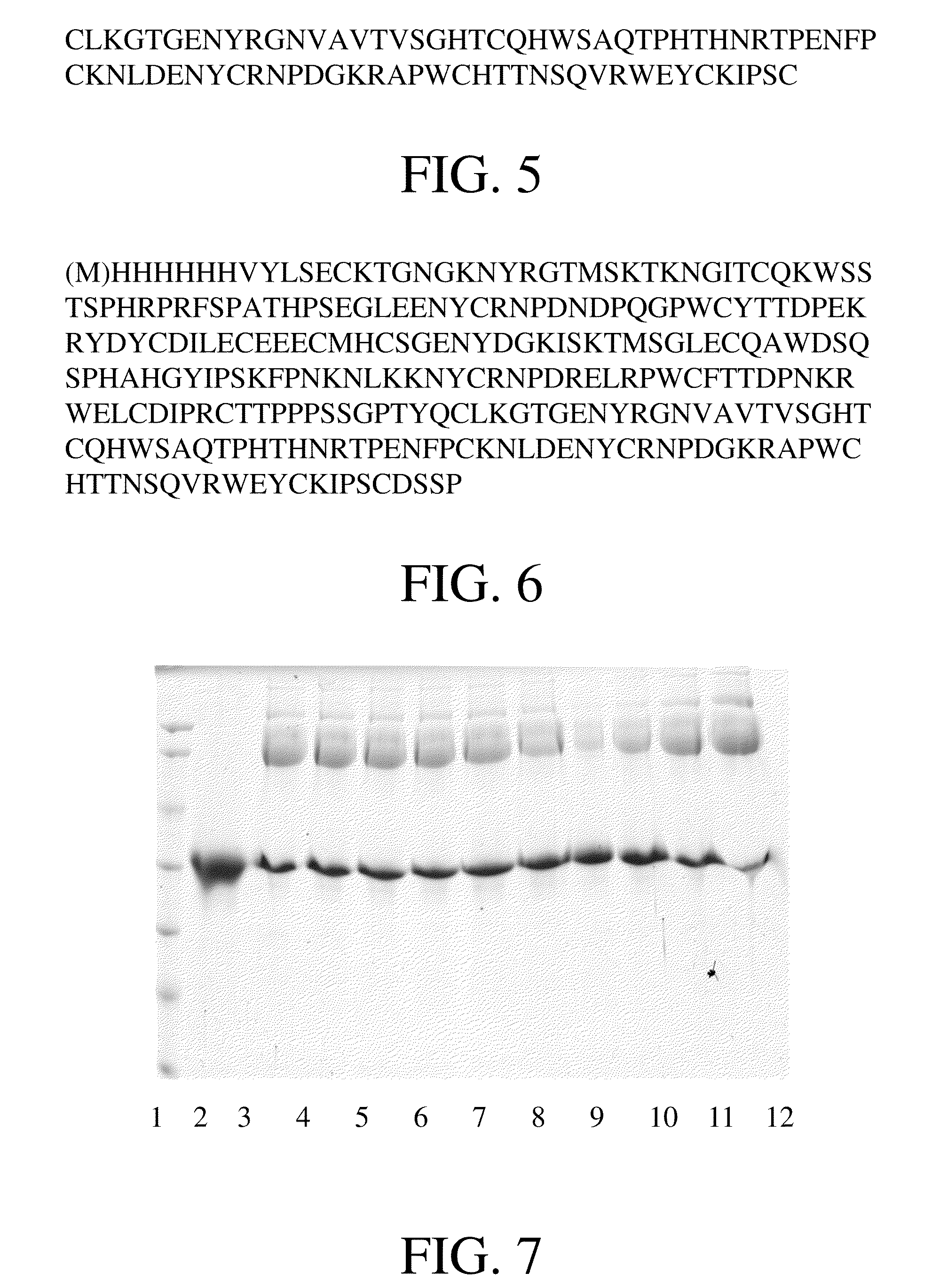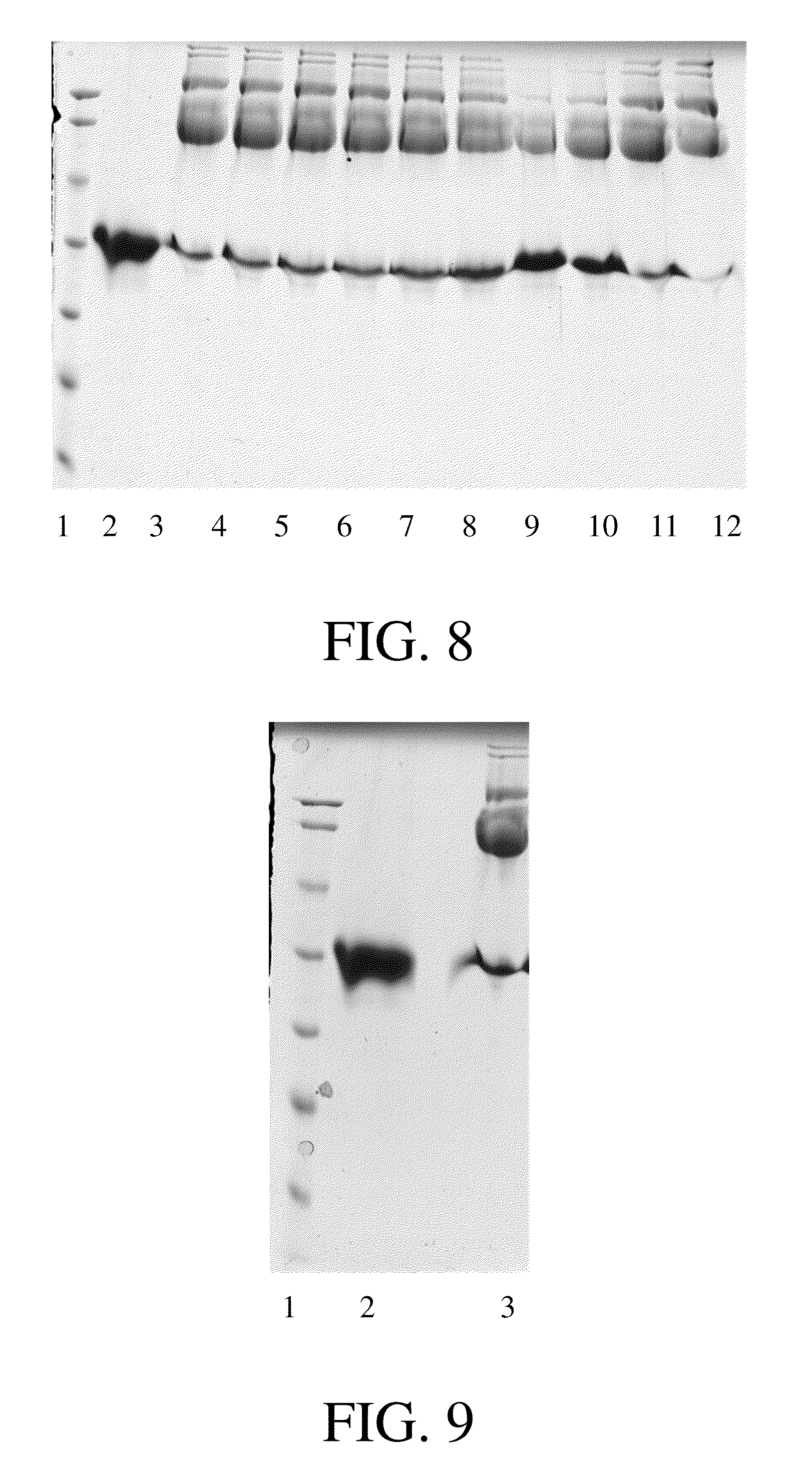Conjugate comprising angiostation or its fragment, the method for producing the conjugate and use thereof
- Summary
- Abstract
- Description
- Claims
- Application Information
AI Technical Summary
Benefits of technology
Problems solved by technology
Method used
Image
Examples
example 1
Coupling of PEG to the N-Terminus of K1-3 Under Different Conditions
[0058]The K1-3 (Protgen Ltd., China) used in this example has the sequence of SEQ ID NO. 2. Specifically, the K1-3 was dialyzed into 30 mM sodium acetate solution (Sino Pharm Chemical Reagent Co., Ltd, China), pH 5.5. Protein concentration was determined by measuring absorbance at 280 nm using a UV spectrophotometer (8453, Agilent Technologies), and then was adjusted to 1 mg / ml. PEG which specifically modifies the N-terminus of protein was used to couple with K1-3 covalently. In one experiment, 20 kDa PEG (solid) was added to the K1-3 containing solution obtained after dialysis (containing 10 mg protein) at molar ratios (PEG:K1-3) of 1:1, 2:1, 5:1, 10:1, and the mixed solution was stirred at room temperature until PEG solid dissolved completely. CH3BNNa (Sigma) was added as reductant to reach a final concentration of 20 mM, and finally the pH value of the solution was adjusted to 5.5. In another experiment, 20 kDa P...
example 2
Coupling of PEG to the N-Terminus of K1-3
[0059]The K1-3 used in this example has the sequence of SEQ ID NO.2. Specifically, the K1-3 was dialyzed into 30 mM sodium acetate solution, pH 5.5. Protein concentration was determined by measuring absorbance at 280 nm using a UV spectrophotometer, and then was adjusted to 1 mg / ml. PEG which specifically modifies the N-terminus of protein was used for covalently coupling with the K1-3. Specifically, 100 mg 20 kDa PEG (solid) was added to 20 ml solution obtained after dialysis (containing 10 mg protein) at a molar ratio (PEG:K1-3) of 5:1, and the mixed solution was stirred at room temperature until PEG solid dissolved completely. CH3BNNa (Sigma) was added as reductant to reach a final concentration of 20 mM, and finally the pH value of the solution was adjusted to 5.5. After resting at room temperature for 6 hours, more than 80% of K1-3 was modified with PEG at a single site, which means one PEG molecule was covalently linked to one K1-3 mole...
example 3
Purification of K1-3 Modified with 20 kDa PEG at N-Terminus Through Cation-Exchange SP Column
[0060]The K1-3 used in this example has the sequence of SEQ ID NO.2. Specifically, K1-3 modified with 20 kDa PEG was purified through SP chromatography column (Amersham). The pH value of the mixed solution obtained after the coupling reaction was adjusted to 5.0. The sample was loaded onto the column pre-equilibrated by a buffer containing 20 mM sodium acetate, pH 5.0. Then gradient elution was performed with buffer containing 20 mM sodium acetate, 1 M NaCl, pH 5.0. The peak of PEG which did not react with K1-3 appeared during penetration and washing since PEG is extremely low charged. The elution peaks appeared in the following order: multi-modified K1-3, mono-modified K1-3, and non-modified K1-3. Different fractions can be collected according to absorbance at 280 nm. The result of purification is shown in FIG. 10.
PUM
 Login to View More
Login to View More Abstract
Description
Claims
Application Information
 Login to View More
Login to View More - R&D
- Intellectual Property
- Life Sciences
- Materials
- Tech Scout
- Unparalleled Data Quality
- Higher Quality Content
- 60% Fewer Hallucinations
Browse by: Latest US Patents, China's latest patents, Technical Efficacy Thesaurus, Application Domain, Technology Topic, Popular Technical Reports.
© 2025 PatSnap. All rights reserved.Legal|Privacy policy|Modern Slavery Act Transparency Statement|Sitemap|About US| Contact US: help@patsnap.com



